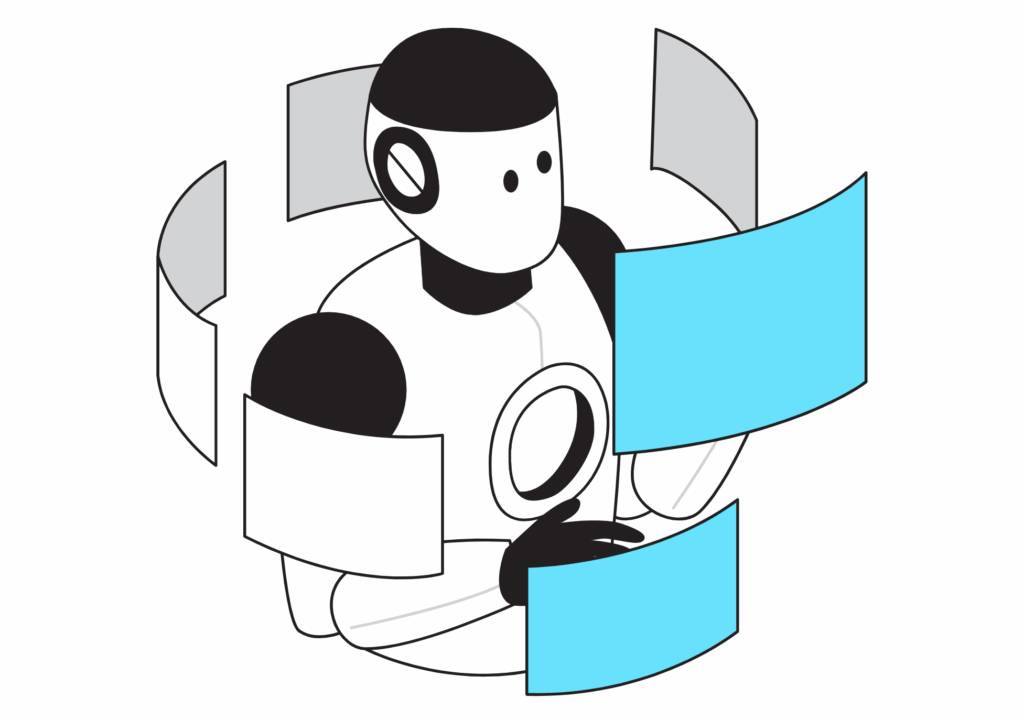Creating an AI Powered Team to Grow Your Business
A Strategic Framework for Role-Based AI Integration
Many businesses adopt AI to improve speed, lower costs, or automate processes. However, these benefits often level off. The real advantage comes when AI is trained to collaborate with your organization rather than simply operate on its behalf.
That shift from automation to augmentation is where performance transforms. Instead of using AI to complete tasks, forward-thinking companies are building AI powered teams: role-based agents that support decision-making, maintain brand voice, and expand strategic thinking.
But what does it take to build an AI powered team?
Where should AI be deployed to carry real weight?
And how do you train agents to reflect your brand, your logic, and your standards?
Recognizing Strategic Friction
Every business has cognitive bottlenecks, moments where human decision-making slows execution. These aren’t inefficiencies in workflow; they’re signs that strategic bandwidth is stretched.
Consider a marketing team preparing a product launch. Messaging is revised repeatedly, not because the ideas are weak, but because tone alignment is unclear. Or consider a founder debating pricing models without a structured framework, delaying go-to-market decisions.
These friction points reveal where AI can reinforce, not replace, human judgment. The first step in building an AI powered team is identifying where your thinking slows down. That’s where intelligent roles begin.
Designing Roles That Replicate Judgment
Once friction is mapped, the next step is to architect roles that simulate how your business evaluates, decides, and communicates.
Each agent is built with a defined scope: what decisions it supports, how it should speak, and which tools it integrates with. Training begins with context, using transcripts from real conversations, annotated examples, and brand voice guides. This enables agents to replicate not just output, but reasoning.
For example, a founder might train an agent to review webinar scripts. Instead of just checking grammar, the agent learns to flag weak calls to action, tone mismatches, and off-brand phrasing because it understands how the founder thinks.
This is the difference between a prompt and a persona. And it’s what makes an AI powered team scalable and trusted.
Embedding Agents into Workflow

Once roles are defined, they must be embedded into operations. That starts with identity.
Assigning names to agents provides clarity. When teams refer to “Marcus” for strategy or “Sasha” for voice, they engage with defined roles and expectations. This simplifies collaboration and builds trust.
In the long run, as agents become integrated into workflows, requests such as “Let Marcus review this deck” indicate strategic validation, while “Send this to Sasha for tone check” ensures brand consistency. Naming transforms AI from an unseen assistant to a recognized contributor.
Training for Brand Voice
Tone consistency is essential for brand integrity. AI agents must be trained to reflect not just what your brand says, but how it says it.
This process includes uploading annotated transcripts, identifying off-brand language, and simulating real-world scenarios. Agents learn how your team communicates effectively and maintains message strength.
If your brand avoids passive language or technical jargon, agents are trained to identify and correct these issues. Over time, they become reliable voice editors, understanding fine distinctions and ensuring consistency across channels.
When set up correctly, your AI powered team produces output that reinforces your brand without constant human revision.
Extending Strategic Capacity
Beyond execution, AI agents can be trained to support strategic reasoning.
Take the example of a founder preparing a new offer. Instead of brainstorming alone, they consult an agent trained on transcripts from past coaching sessions and boardroom discussions. The agent challenges assumptions, simulates objections, and suggests alternative positioning.
These agents help teams move faster by surfacing blind spots, validating ideas, and offering structured alternatives. Their value lies in their ability to think through complexity, not just summarize it.
This is where an AI powered team becomes indispensable, not just helping you do more, but helping you think better.
Featured Insight: Alicia Lyttle on the AI Explored Podcast
For a deeper look into how AI roles are built and trained, watch Alicia Lyttle’s guest appearance on the AI Explored Podcast with Michael Stelzner. In the episode. “Creating AI Roles to Grow Your Business,” Alicia breaks down how she designs agents that reflect her decision-making, tone, and strategic logic.
She shares how each agent is trained with transcripts, past work, and brand rules. Turning AI from a reactive tool into a proactive teammate. The episode offers practical insights for founders, marketers, and strategists looking to build AI powered teams that actually work.
Deployment Framework: Building Your First Role
Starting doesn’t require a system overhaul. It requires one role built with precision and purpose. Below is a structured framework for deploying your first AI powered team member:
Identify a strategic friction point
Pinpoint where decision-making slows execution. This could be tone inconsistencies in marketing, repeated revisions in client proposals, or delays in pricing decisions. The goal is to find mental bottlenecks, not just tasks, but thinking patterns that drain bandwidth.
Define the role with clarity
Articulate what the agent is responsible for. Is it reviewing messaging for tone? Validating strategic frameworks? Supporting offer development? Include scope, tone expectations, decision boundaries, and preferred tools. Treat it like a job description for a high-performing hire.
Shape the agent’s persona
Assign a name and build its identity. Upload transcripts, brand assets, annotated examples, and decision logic. A named agent serves as a clear reference point, supporting collaboration and accountability.
Train through iterative feedback
Start with real scenarios. Let the agent review, respond, and refine. Use feedback loops to calibrate tone, logic, and responsiveness. Focusing on usability and building trust through consistent performance.
Test in live business conditions
Deploy the agent in a controlled but active environment. For example, a founder overwhelmed by pitch deck revisions might assign the agent to review structure, tone, and clarity. After several iterations, the agent becomes a reliable reviewer. Saving hours and improving consistency.
Once the role proves its value, you’ll know exactly how to build the next.
Intelligence as Infrastructure
An AI powered team is more than a productivity tool; it is a strategic asset. When agents are trained with context, aligned with brand standards, and integrated into workflows, they extend your organization’s capabilities.
This framework shifts AI from a reactive tool to a proactive infrastructure layer. It enables businesses to scale judgment as well as output, positioning AI as a core driver of enterprise growth.
To extend this transformation across your organization, explore our AI Implementation Roadmap for Scalable Success—a modular guide for aligning vision, data, and execution.
Then begin with a single, well-defined role. Build it intentionally, allow it to demonstrate value, and expand your AI powered team with confidence.
Ready to Build Your AI Powered Team?
If you are ready to build your AI powered team, AI Innovision can help you design intelligent roles that deliver clarity, consistency, and strategic growth. Let’s build systems that think together.




